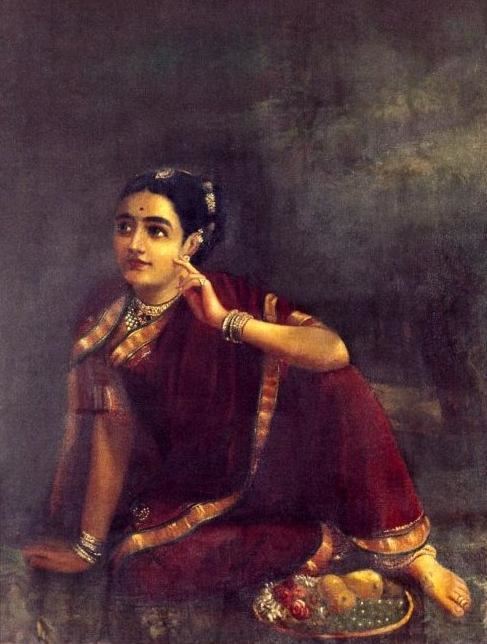Devanagari राधा Symbol Lotus | Sanskrit transliteration Rādhā | |
 | ||
Mantra Om Radhikaya Jivenam Namah, Radhavallabh Shri Harivansha Shri Vrindavan Shri Van Chandra, Radhe-Radhe | ||
Radha (IAST: Rādhā), also called Radhika, Radharani, and Radhe, is a Hindu goddess who is almost always depicted alongside Krishna and features prominently within the theology of Vaishnava traditions, which regards Radha as the original Goddess or MahaLakshmi. Radha is also the principal god of worship in the Nimbarka Sampradaya, as Nimbarka, the founder of the tradition, declared that Radha and Krishna together constitute the absolute truth. Radha is the most important gopi in Rasa lila (sacred dance) with Lord Krishna. Radha is often referred to as Rādhārānī or "Rādhikā" in speech, prefixed with the respectful term 'Srimati'. The word "Radha" can also mean longing.
Contents
Etymology
The Sanskrit term Rādhā (Sanskrit:राधा) means “Fortunate, Successful”. In Gauḍīya Vaiṣṇavism it is understood that the origin of name Rādhā are Sanskrit words ārādha (paying homage, gratification) and ārādhana (homage, worship). The accurate understanding would be service, specifically devotional service, since it comes from love and thus is joyful.
Within Vaishnavism
In the Vaishnava devotional or bhakti traditions of Hinduism that focus on Krishna, Radha is the incarnation of "the feeling of love towards krishna".
For some of the adherents of these traditions, her importance approaches or even exceeds that of Krishna. She is considered to be his original shakti, the supreme goddess in both the Nimbarka Sampradaya and following the advent of Chaitanya Mahaprabhu also within the Gaudiya Vaishnava tradition. Radha Chalisa mentions that Krishna accompanies one who chants " Radha" with pure heart. Other gopis are usually considered to be self willing maidservants (Sevika) of Radha. Radharani's superiority is seen in Krishna's flute, which repeats the name Radha. Between Radha and Rukmini, Radha is superior. It is also said that when lord Krishna brought all his consorts to meet Radha, they saw Radha's face and declared her the most beautiful and sacred hearted woman in the whole universe and that she would retain this position until the end of the universe as no one will surpass her beauty and her nature. Radha's connection to Krishna is of two types: svakiya-rasa (married relationship) and parakiya-rasa (a relationship signified with eternal mental "love"). The Gaudiya tradition focuses upon parakiya-rasa as the highest form of love, wherein Radha and Krishna share thoughts even through separation. The love the gopis feel for Krishna is also described in this esoteric manner as the highest platform of spontaneous love of God, and not of a sexual nature.
Proponents of the Gaudiya and Nimbarka schools of Vaishnavism give the highly esoteric nature of Radha's relationship to Krishna as the reason why her story is not mentioned in detail in the other Puranic texts.
Nimbarka
Nimbarka was the first Vaishnava acharya to disseminate teachings about Radha.
